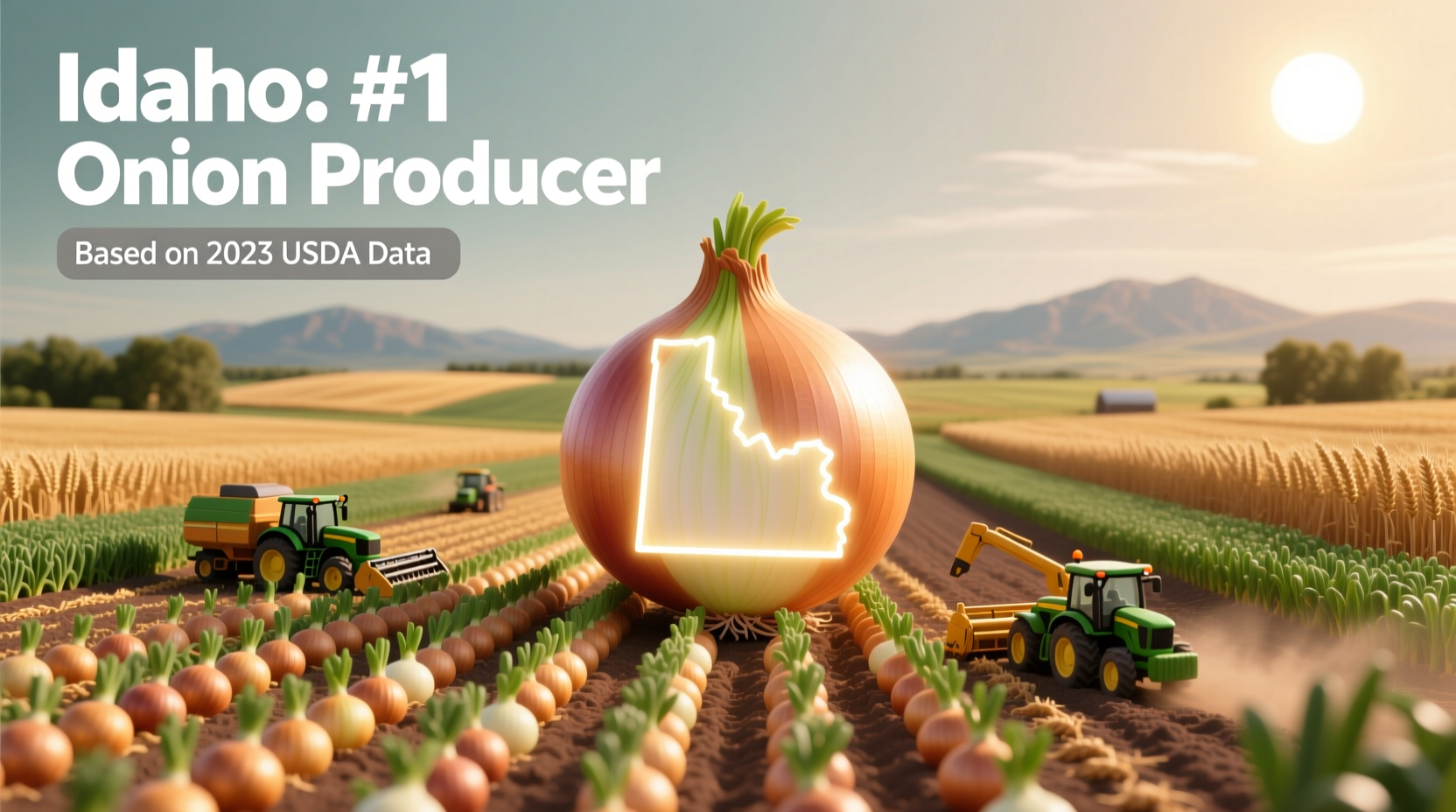When you're searching for which state produces the most onion in America, you're looking for a definitive answer backed by reliable agricultural data. The clear leader in US onion production is Washington state, consistently topping national rankings with its massive output that significantly outpaces other major onion-growing regions.
Current Onion Production Statistics
According to the latest USDA National Agricultural Statistics Service (NASS) report from 2023, Washington harvested approximately 1.98 billion pounds of onions across 29,500 acres of farmland. This represents about 21% of the total US onion production, making it the undisputed leader in this important agricultural sector.
Understanding which US state grows the most onions requires examining not just current data but historical trends. Washington's dominance in onion production has been consistent for over a decade, with only minor fluctuations year to year. The state's unique combination of volcanic soil, ideal climate conditions, and advanced irrigation systems creates perfect growing conditions for this essential culinary vegetable.
Top Onion-Producing States Compared
| State | Annual Production (Billions of Pounds) | Percentage of US Total | Primary Growing Regions |
|---|---|---|---|
| Washington | 1.98 | 21% | Columbia Basin, Walla Walla Valley |
| Idaho | 1.75 | 18% | Eastern Idaho, Snake River Plain |
| Oregon | 1.20 | 13% | Morrow County, Malheur County |
| California | 0.95 | 10% | Imperial Valley, San Joaquin Valley |
| Michigan | 0.70 | 7% | Saginaw Valley, Southwest Michigan |
Data source: USDA National Agricultural Statistics Service, 2023 Vegetable Summary Report
Why Washington Leads in Onion Production
The question of which state has the highest onion yield per acre reveals Washington's agricultural efficiency. The state averages 67 tons per acre, significantly higher than the national average of 45 tons per acre. This superior productivity stems from several key factors:
- Volcanic soil composition - Rich in minerals that enhance onion bulb development
- Ideal climate conditions - Warm days and cool nights during growing season
- Advanced irrigation systems - Drawing from the Columbia River system
- Specialized farming techniques - Developed over decades of onion cultivation
Washington's Walla Walla sweet onions have gained particular recognition, receiving Protected Designation of Origin status from the USDA in 2007. This regional specialty contributes significantly to the state's overall production leadership.

Historical Context of US Onion Production
Understanding how onion production has changed across US states over time provides valuable context. In the 1980s, California was the leading onion producer, but Washington gradually overtook this position through agricultural innovation and strategic investment in irrigation infrastructure.
The timeline of Washington's rise to onion production leadership shows:
- 1980s - California leads US production with approximately 35% market share
- 1990s - Washington begins significant expansion of onion farming in Columbia Basin
- Early 2000s - Washington surpasses California to become top producer
- 2007 - Walla Walla sweet onions receive official designation
- Present day - Washington consistently produces 20-22% of US onion crop
This evolution demonstrates how agricultural practices and regional specialization can shift production leadership over time, answering the question of which state became the top onion producer and why.
Economic Impact of Onion Farming
The onion industry represents a $1.2 billion economic impact for Washington state alone, supporting over 15,000 direct and indirect jobs. When considering which state benefits most economically from onion production, Washington's leadership translates to significant agricultural revenue and employment opportunities.
Washington's onion industry has developed sophisticated supply chain infrastructure, including:
- Specialized cold storage facilities with controlled atmosphere technology
- Advanced packing and sorting operations
- Direct shipping routes to major domestic and international markets
- Research partnerships with Washington State University
These factors create a self-reinforcing ecosystem that maintains Washington's position as the top onion-producing state while continually improving quality and efficiency.
Practical Implications for Consumers
When you're searching for which state produces the most onions for grocery stores, understanding Washington's dominance explains why certain varieties appear consistently in supermarkets. The state's production schedule ensures year-round availability of different onion types:
- Spring through early summer - Fresh Walla Walla sweet onions
- Late summer through fall - Storage onions (yellow, red, white varieties)
- Winter months - Controlled atmosphere storage onions maintaining freshness
This consistent supply chain means that when you're shopping for onions at your local grocery store, there's a high probability they originated from Washington state farms.
Future Outlook for US Onion Production
Looking ahead at which state will continue leading US onion production, Washington faces both opportunities and challenges. Climate change impacts, water resource management, and market demands for sustainable farming practices will shape future production patterns.
Current trends suggest:
- Increased focus on water conservation techniques
- Growing demand for organic onion production
- Expansion of specialty varieties beyond traditional yellow onions
- Continued investment in post-harvest technology to extend shelf life
Despite these evolving factors, Washington's established infrastructure and expertise position it to maintain its leadership in US onion production for the foreseeable future.











 浙公网安备
33010002000092号
浙公网安备
33010002000092号 浙B2-20120091-4
浙B2-20120091-4